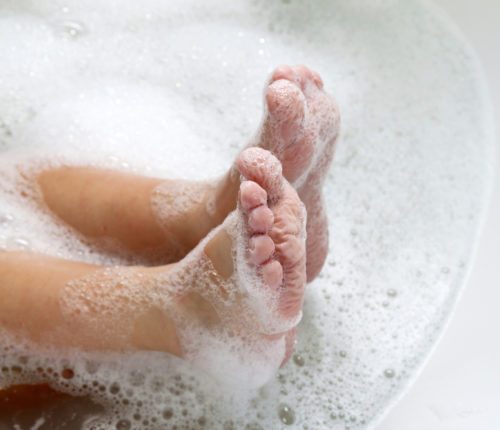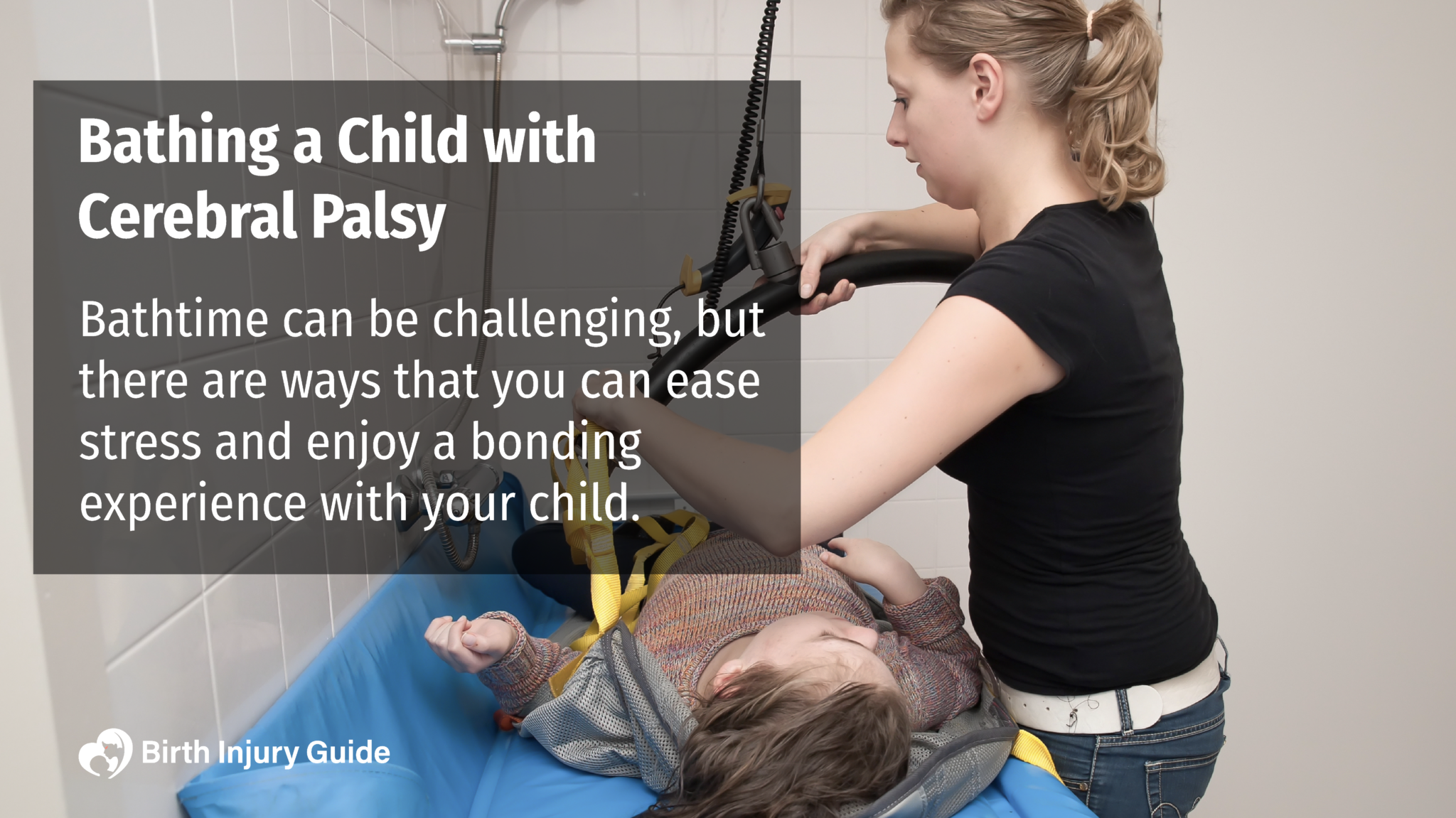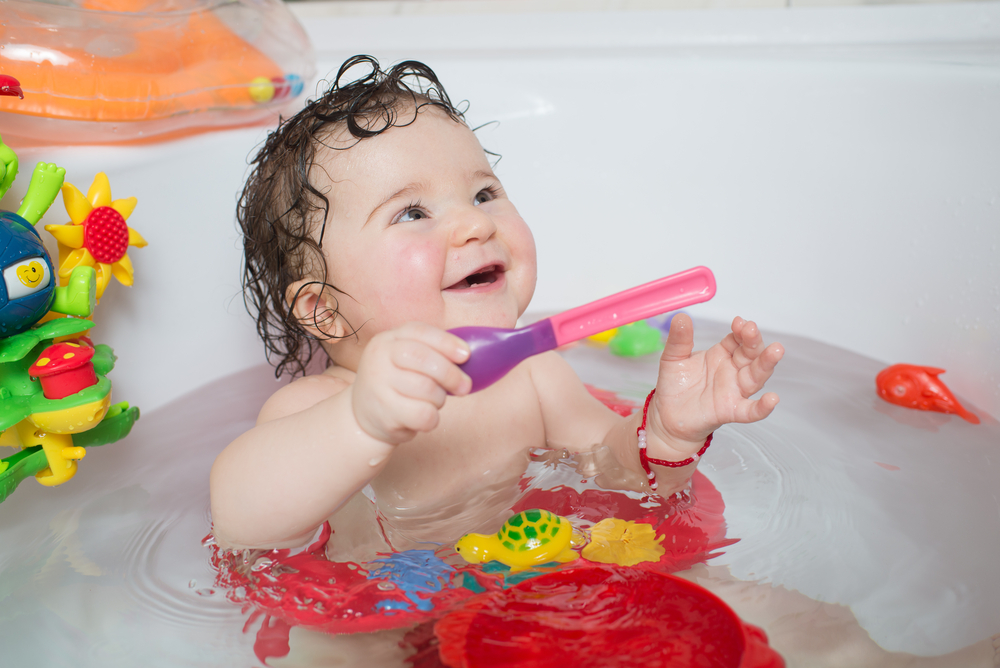
Bathing a Child with Cerebral Palsy
Bathing is part of a good hygiene routine. But not everyone is able to maintain good self-care without help. For example, people with cerebral palsy have a difficult time completing tasks like bathing on their own. Bathing a child with cerebral palsy can be challenging because of limited mobility, spasticity issues and cognitive development.
Bath time can also be dangerous if parents and/or caregivers do not properly supervise the child. Even a small distraction or short absence can be dangerous.
With the right tools and a little extra attention, bath time can be a fun and enjoyable experience for you and your child. It can also be a great bonding experience. Below, we discuss some tips for bathing a child with cerebral palsy.

Tips for Bathing a Child with Cerebral Palsy
Make bath time a fun and enjoyable experience for you and your child by considering these tips:
Set Out Tools First
When giving your child a bath; it’s important to start by setting out everything you will need before you get started. Tools that you may need for bath time include:
- Towels
- Washcloth or sponge
- Soap (and possibly a soap dish)
- Shampoo and conditioner
Make sure that all of these things are within reach so that there isn’t a single moment when you are away from your child’s side.
Be Safe and Take Precautions
Soap and water together makes everything slippery! Because you’re spending so much extra effort making sure that your child is safe (not slipping, not bumping his or her head, etc.), you may end up injuring yourself if you aren’t careful. Parents can injure themselves during bath time by slipping, stretching or straining.
So how do you avoid injuries to yourself and your child? By doing the following:
- Make sure that the bathing area has grip mats to avoid slipping
- Cover any blunt edges (such as the edge of the bathtub) with rubber or towels
- Consider getting kid-proof rubber coverings for the bath fixtures so that neither the child nor you have the risk of hurting yourselves on those edges.
- Consider installing safety rails around the bathing area. Some safety rails can be drilled into the fiberglass of showers and into the drywall around bathtubs; whereas other safety rails depend on suction cups to stay up. The more permanent safety rails might be safer, but if you live in an apartment or have special circumstances, the suction cup rail is more temporary (and still safe).
Use a Bath or Shower Chair
When bathing a child with cerebral palsy, adaptive equipment is particularly useful. One great example is a bath or shower chair. These waterproof chairs help you support your child during bath time, and also provide better access to their body to ensure they are clean. Bath and shower chairs are elevated; so you are more comfortable and you and your child are also safer.
Use Caution when Lifting, Standing or Sitting
Children with cerebral palsy often struggle with the transition from sitting to standing and vice versa. Because this lack of coordination is related to their disability, you can expect matching challenges when it comes to bath time. Before your child becomes too heavy to carry, you can lift your child in and out of his or her wheelchair and place him or her in the bath. But when the child is older, you and your child’s occupational therapist may need to work together to:
- Help your child stand
- Assist your child in learning how to get safely into the tub (safety rails again are very important)
- Help your child be able to sit in the shower chair or tub
Take this process slowly so that your child can feel relaxed, in control, and most importantly, safe.
Cast Care
Common in occupational therapy, children with cerebral palsy have a number of orthotic devices that help create overall strength, endurance, and eventually gait. Some of these orthotic devices can be removed for bath time, but some need to stay on. If the cast or orthotic device can’t be removed; it’s best to give your child a sponge bath. If the cast or orthotic device can be removed; make sure that the skin under the device is thoroughly dry before the cast goes back on.

Bathing a child with cerebral palsy can be a challenge, but it certainly isn’t impossible. By following tips like we discuss above, and the guidance of your healthcare provider and therapists, bath time can become much more than a hygiene routine. It can become a learning experience and a way to improve your child’s independence and work on important motor skills.

